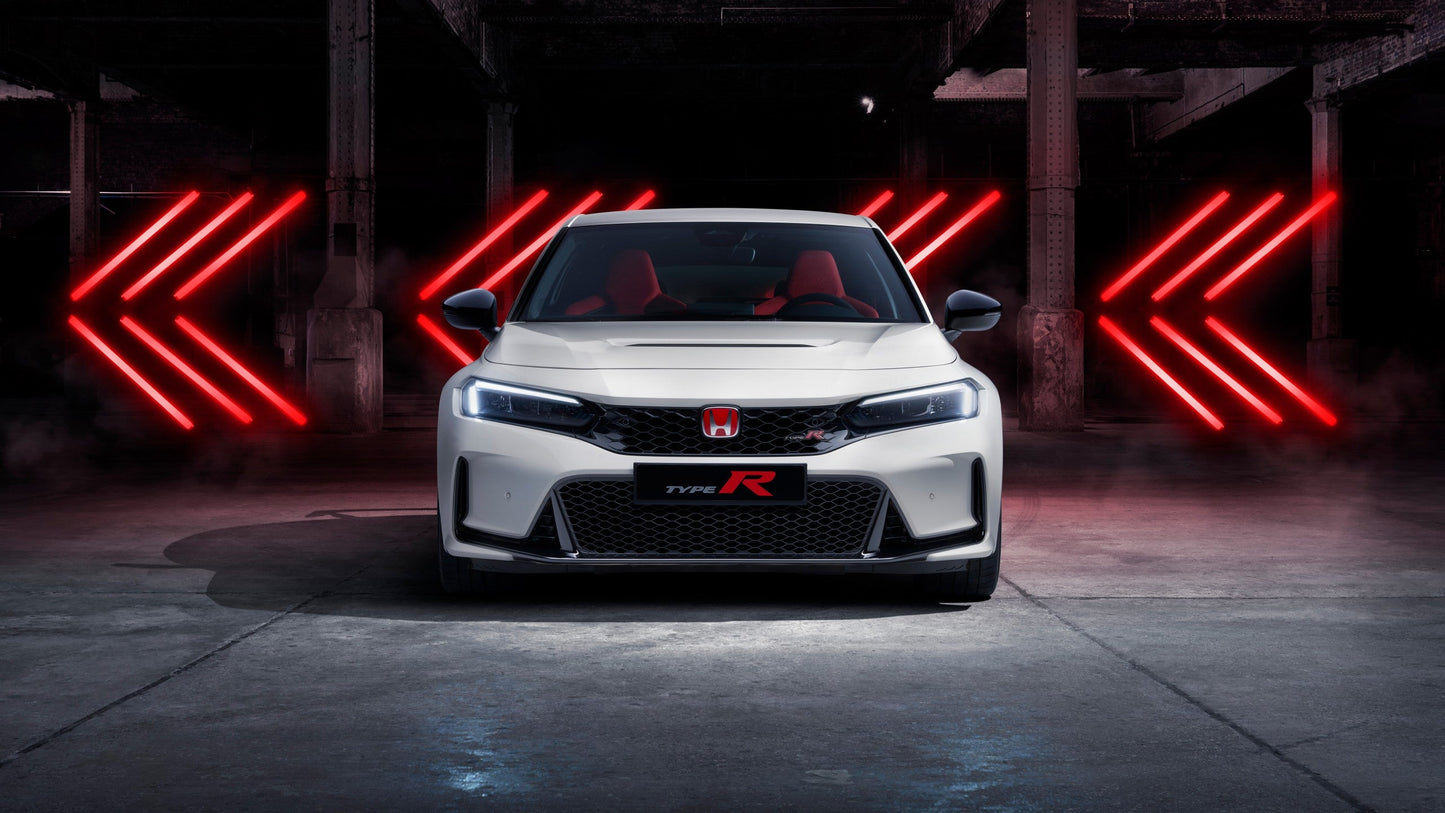
Let me tell you something upfront: I wasn’t always a front-wheel-drive guy. I used to scoff at the idea—no amount of marketing spin could convince me FWD was "driver’s car" material. But then I drove a Civic Type R. And not just any Civic—the FK8, the angry-looking, triple-tipped boost-snorting hatch that made even die-hard RWD fans take notice. That was the moment everything changed.
But before we get into it, let’s back it up a bit.
A Brief History of the Badge
The Civic Type R legacy kicked off with the EK9 back in 1997. Lightweight, stripped-down, and high-revving—it was pure Honda ideology in motion. A 1.6L screaming to 8,200 RPM with a close-ratio gearbox and a proper helical LSD. It wasn’t fast on paper, but on a twisty road like Old Pac, it was all rhythm and feel. The car taught you how to drive, and rewarded you every time you got it right.
Then came the EP3, the UK-built oddball with a K20 under the bonnet. More torque, more usable, and still featherlight. After that, the FD2R lit things up again in Japan—four doors, NA VTEC mayhem, and chassis sharp enough to cut glass.
But the real turning point came with the FK2 and especially the FK8. Turbocharged. Widebody. Tech-packed. No longer a screaming underdog, but a full-on Nürburgring record-breaker. The FL5? That’s the current evolution. Quieter styling, sure—but it’s smarter, sharper, and somehow even more capable.

Engineering That Hits Different
Honda’s not out here chasing trends—they’re building cars with purpose. Every generation of the Civic Type R is a culmination of lessons learned on track, under pressure, and often against the odds. The result? A machine that’s engineered to punch way above its weight. Here’s how:
- Limited-Slip Diff That Actually Works
Most cars with torque steer get worse the harder you drive them. The Civic Type R? The faster you go, the more planted the front end feels. That’s thanks to its helical limited-slip differential, not some electronic brake-based imitation. Whether you're powering out of hairpins or loading the front end into sweepers, the diff keeps things tight, with insane grip and minimal understeer. In the dry, it feels almost like AWD at the front. In the wet? Predictable, not panicked.

- Chassis That Feels Welded to the Road
Honda doesn’t cut corners when it comes to rigidity. With the FK8, they added structural adhesives and bracing to take an already stiff platform and crank it to eleven. The FL5 pushes it even further—15% stiffer torsionally, 75% more rigid in the rear, thanks to a redesigned subframe and more reinforcement around the strut towers. What that means for you? Better rotation, less flex, and way more feedback—especially when you’re pushing through places like the high-speed S-bends at Wakefield.
Rev-Matching That’s Actually Worth Using
Some cars have rev-matching as a gimmick. Not here. Honda’s auto-blip system is mechanical ballet. Downshift mid-corner? The ECU blips the throttle just right, every time. And it’s not intrusive—it’s confidence. You can drive it like a pro, heel-toe perfectly every time, whether you’re on your morning commute or chasing apexes on the track. Don’t want it? Flick it off. It’s your car, and the setting doesn't re-activate every time you turn the car on and off again.

K20C1: A Turbo Four With N/A DNA
Let’s talk about that heart under the bonnet. The K20C1 is a beast in disguise. 2.0L, direct-injected, forged internals, low-inertia twin-scroll turbo. From the outside, it’s just another boosted four-pot. But behind the wheel, it pulls with urgency, like an NA motor on VTEC steroids. There’s virtually no lag, and the torque hits early—from 2500rpm all the way to redline. And if you’re tuning? These engines are known to take 400hp+ with bolt-ons and a proper tune, without breaking a sweat.

Suspension That Knows the Road
Unlike many hot hatches that default to a harsh ride in the name of “sportiness,” the CTR’s adaptive dampers are pure witchcraft. In Comfort mode, it soaks up Sydney’s pothole jungle without feeling floaty. Switch to +R, and it tightens up instantly—less roll, more response, but still compliant enough to keep the tyres planted. The dual-axis front strut setup (a nod to Honda’s own race cars) also helps kill torque steer without messing with steering feel.
Brakes That Don’t Beg for Mercy
FK8 and FL5 models both come with big Brembos up front—4-piston calipers clamping 350mm+ rotors. But what sets them apart isn’t just size—it’s consistency. Honda’s brake cooling system actually works, meaning less fade under track abuse, and the pedal feel? Rock solid, session after session. You’ll come out of the main straight at SMSP confident—not praying the pedal holds.

Weight Distribution That Fools You
Even though it’s FWD, the Type R’s weight balance is near perfect for its class. The battery’s been relocated for balance. Lightweight components like an aluminium bonnet and composite bumpers help keep the nose light. And even with four doors and a boot, the car feels agile, never front-heavy. Mid-corner transitions? Crisp. Lift-off rotation? Predictable.
How It Feels to Drive
On the road? It’s composed. Around town, you can daily it without complaint. But feed it a bit of throttle through a sweeping backroad—like a dawn run through National Park—and it comes alive. The steering is telepathic. The brakes are overbuilt. The balance makes you question everything you thought you knew about FWD.
On track? Take it to Wakefield or SMSP, and you’ll see why people still talk about it like it’s some kind of cheat code. Trail braking doesn’t scare it. Mid-corner bumps? It absorbs and plants. You can chase down AWD cars with more power, and they’ll be wondering why their tyres are screaming while you’re still smooth and tidy.
So… Is It Worth the Hype?
Absolutely. The Civic Type R isn’t just good for a FWD car—it’s good, full stop. It nails the balance between rawness and refinement. It has soul in a world of numb performance. And whether you're driving to work or pushing through Turn 1, it wants to reward you.
The Type R isn’t for everyone. It’s loud, a bit aggressive, and if you're after luxury or subtlety, look elsewhere.
But if you care about how a car feels—how it communicates, rotates, and responds—the Civic Type R still punches above its weight. And that’s not hype. That’s Honda doing what Honda does best.





